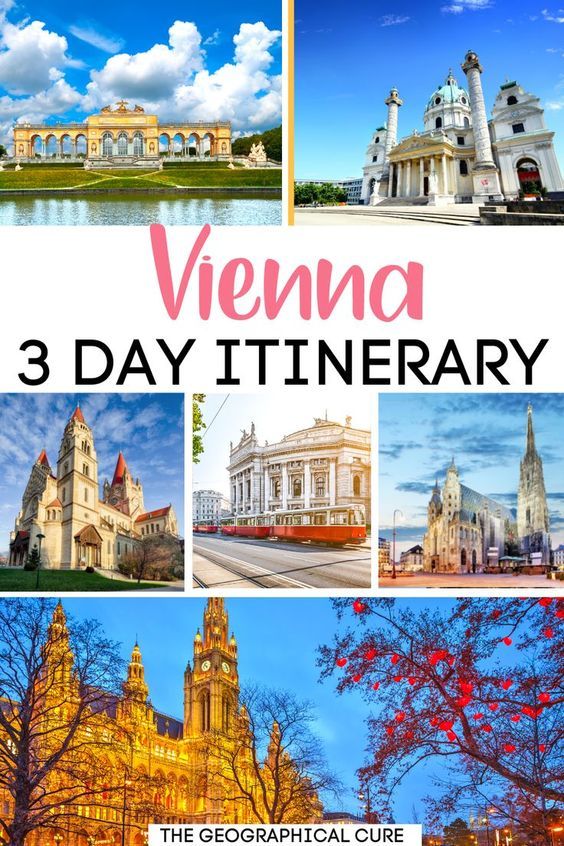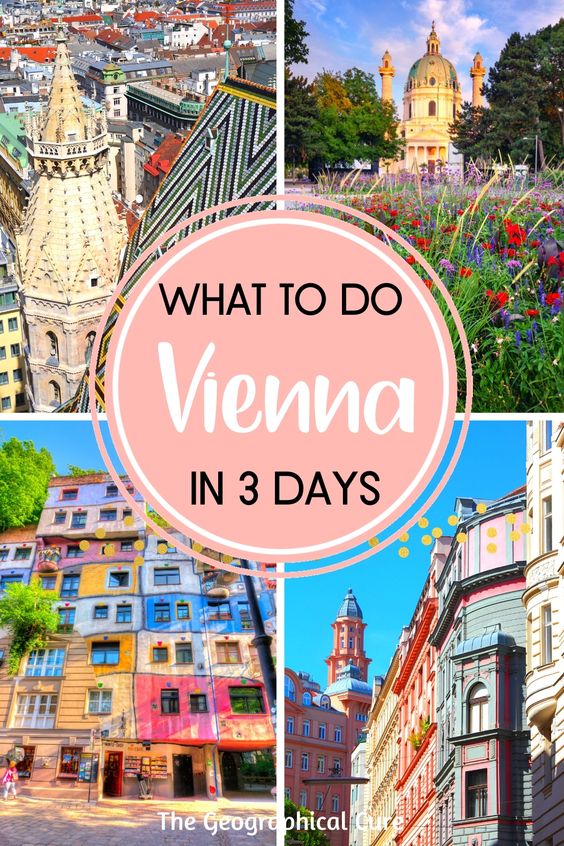Vienna is the capital of Austria, the birthplace of classical music, and home to the Habsburg dynasty and its rich heritage. Vienna is dubbed the City of Music and the City of Dreams for all the famous composers that lived there.
Vienna is such a fancy city, an open air museum really. Vienna is awash in imperial palaces, grand Baroque architecture, and seriously swoonful museums. The UNESCO-listed buildings create the city’s distinctive look.
The city center is pedestrian-friendly, sprinkled with green parks, and crammed with quaint coffee shops.
And Vienna doesn’t just bask, unblinkingly, in its quaint fin-de-siècle glory. It’s not a time capsule. Vienna is much more hip since the last time I visited.
It has new and renovated museums, trendy boutique hotels and restaurants, and edgy neighborhoods. It’s cooler than you’d guess.
You could easily spend a week or two in Vienna, lost in its coffee culture and addicted to Wiener Melange and Sacher Tortes. In fact, I recently did just that.
But since most of us don’t have unlimited time, I’ve written up my ideal 3 days in Vienna itinerary.
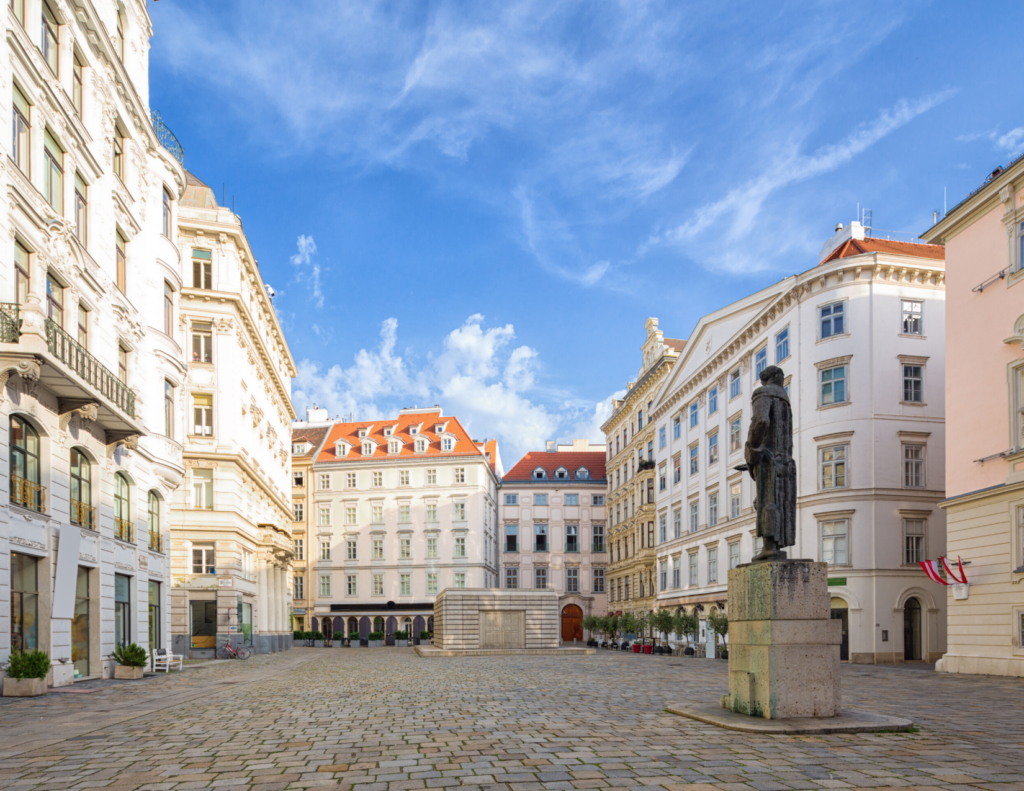
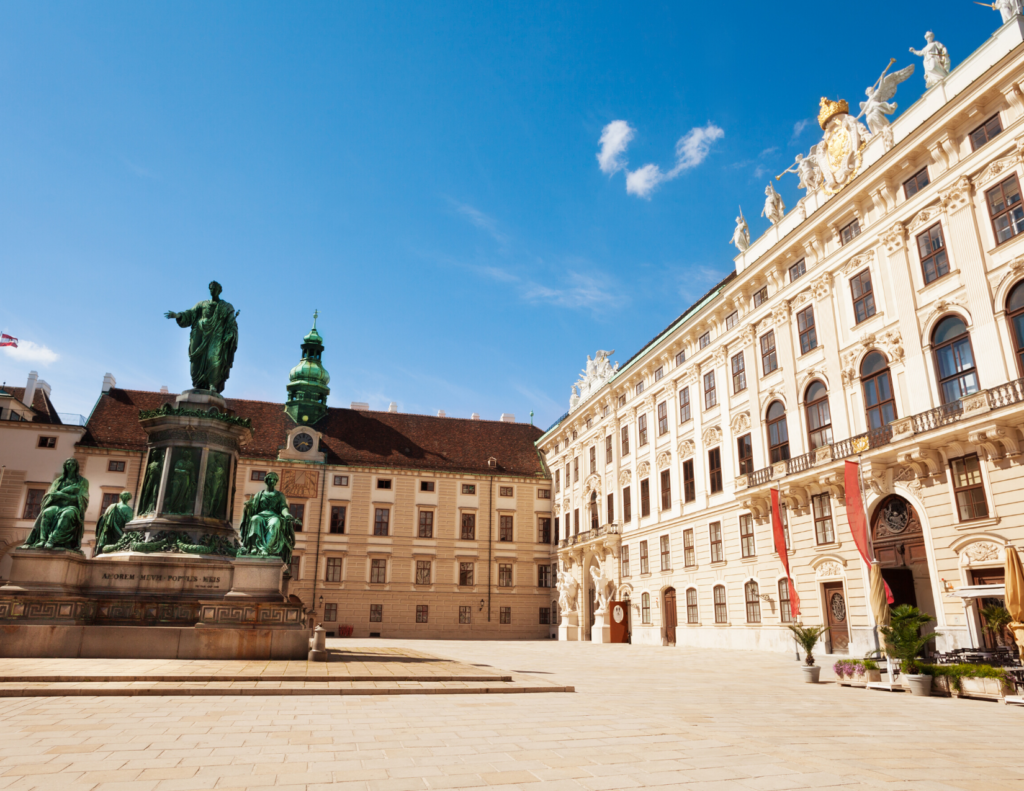
Overview of 3 Days in Vienna Itinerary
Here’s an snapshot of what you’ll see and do:
- Day 1: Old Town, Mozart House, St. Stephen’s Cathedral, Vienna Opera House, Museums, nighttime tour
- Day 2: Schonbrunn Palace, Belvedere Palace, Hofburg Palace, Austrian National Library
- Day 3: St. Charles Church, Naschmarkt, Vienna City Hall, Burgtheater, Concert
Before You Go: Here’s How To Plan Your Visit To Vienna
Below are some of the top tours, hotels, and experience in Vienna. Donʻt forget to plan ahead, especially in high season!
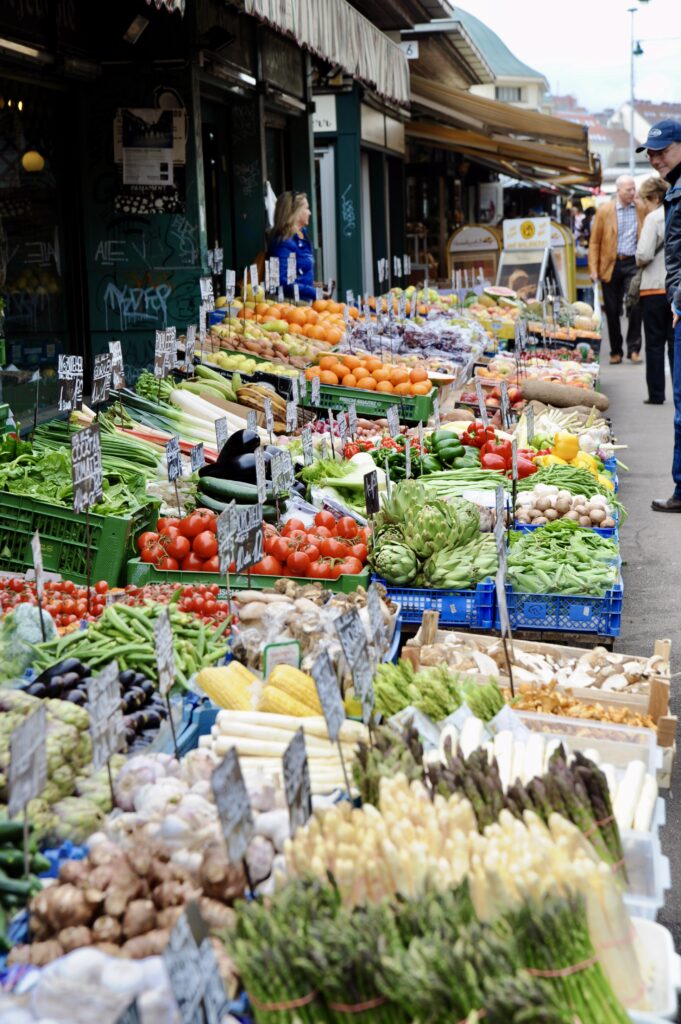
Best Tours:
- city walking tour
- Schönbrunn Palace Skip-the-Line Tour
- Schönbrunn Palace concert
- food and market tour
- pastry tour
- Danube River boat cruise
Best Hotels:
- Palais Coburg
- Hotel Sans Souci Wien
- Grand Ferdinand Hotel
- Hotel Sacher Wien
- Palais Coburg
- Hotel Imperial
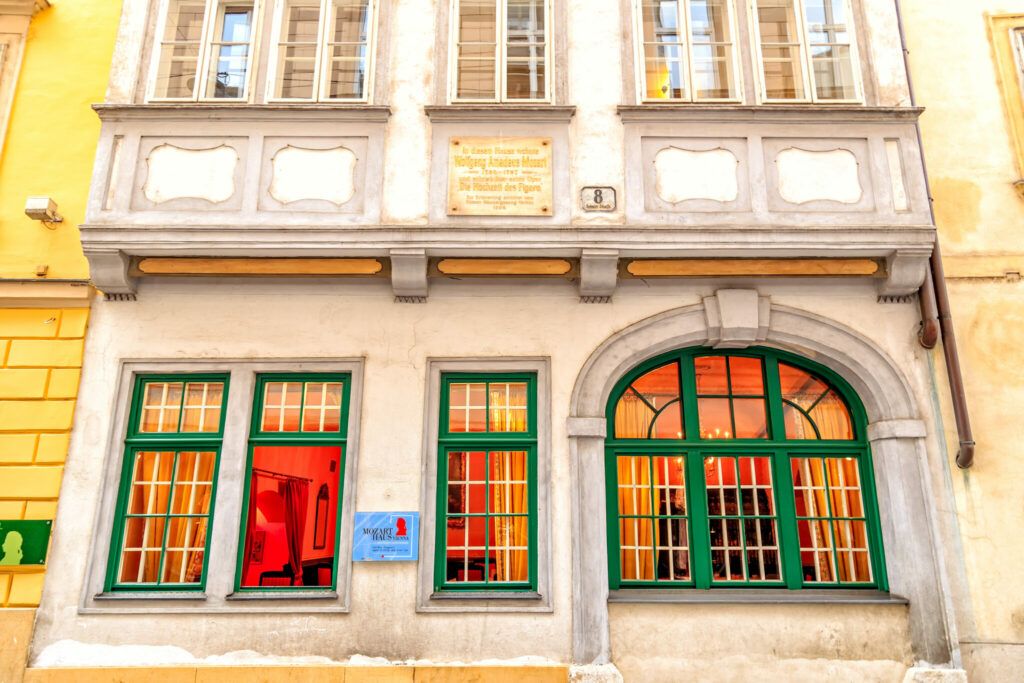
3 Days In Vienna Itinerary
Day 1 AM : Explore the Old Town
1. Mozart House
You’ll want to visit the Mozart House, on Domgasse Street. Vienna is obsessed with Mozart, its adopted son and a prolific composer.
Mozarthaus is the only Mozart apartment in Vienna that survives today. He lived there for 3 years. You’ll learn about 18th century Vienna and Mozart’s life and work.
Click here to book an entrance ticket and guided tour of the Mozart House. You can also book a walking tour exploring Vienna’s musical past.
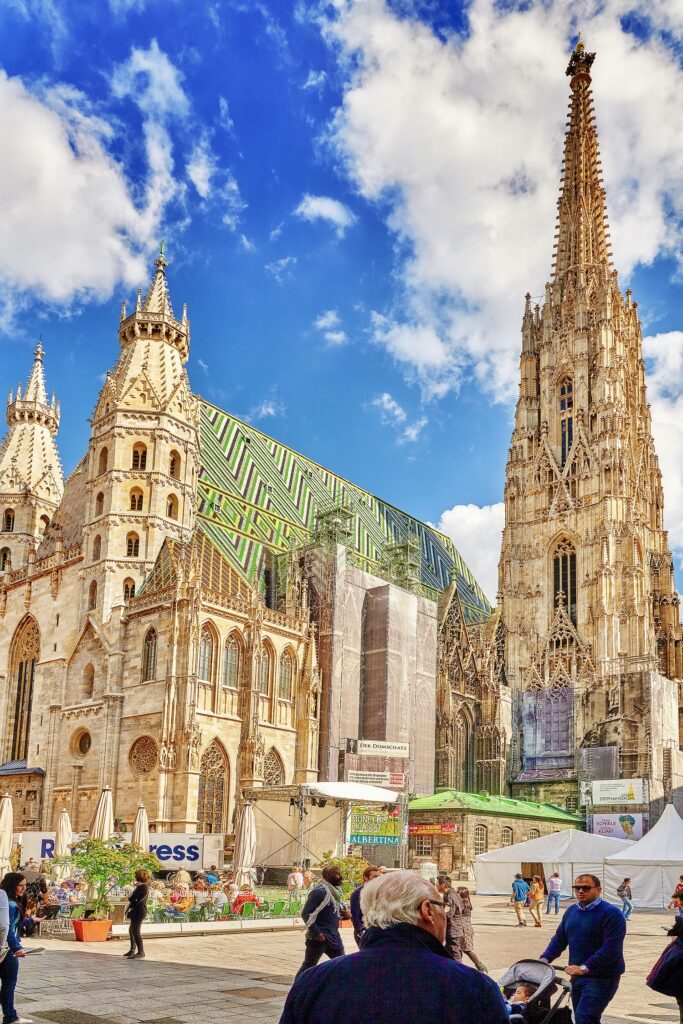
2. St. Stephen’s Cathedral
Just a short walk from the Mozart House and you’re at the towering St. Stephen’s Cathedral, Vienna’s defining landmark.
You can’t miss it. Its most distinctive feature is its multicolor tiled roof, which looks glorious in the sunshine.
Both towers of the cathedral are open to the public and can be climbed for a fee. The south tower is high and affords the best views of the city (and the exquisite roof). But the other tower has a handy elevator if you don’t want a long hike.
The interior of St. Stephens isn’t as eye catching as the exterior to my mind. It’s rather gloomy. But its three nave design is nonetheless impressive to behold.
In high season, you will want to pre-book an all inclusive ticket to avoid long queues. You can also book a combined ticket to the cathedral and the Dom Museum.
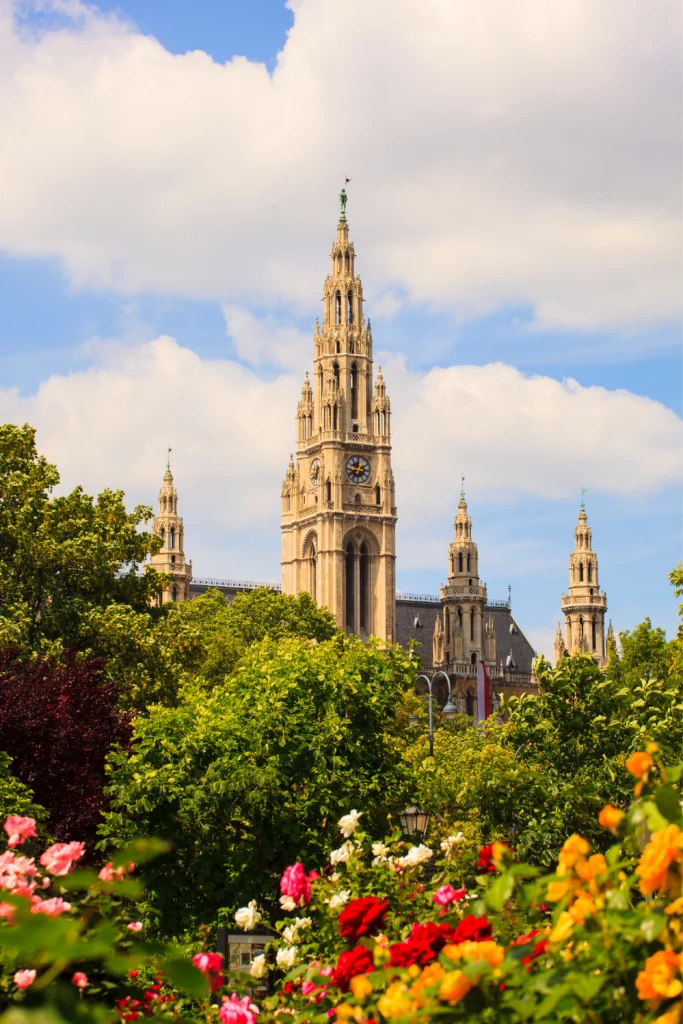
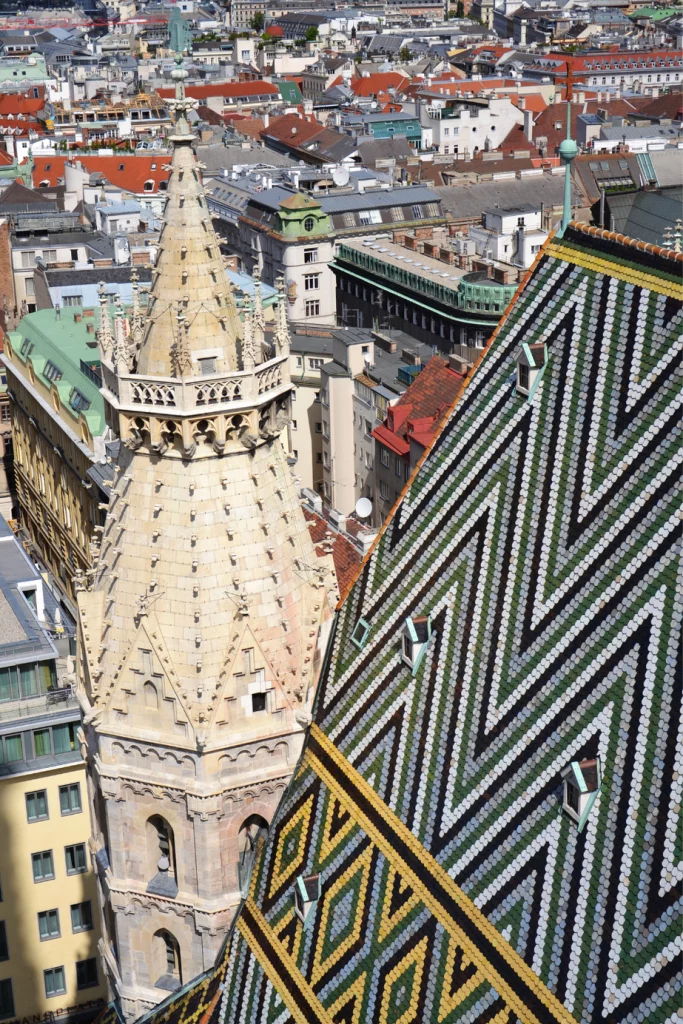
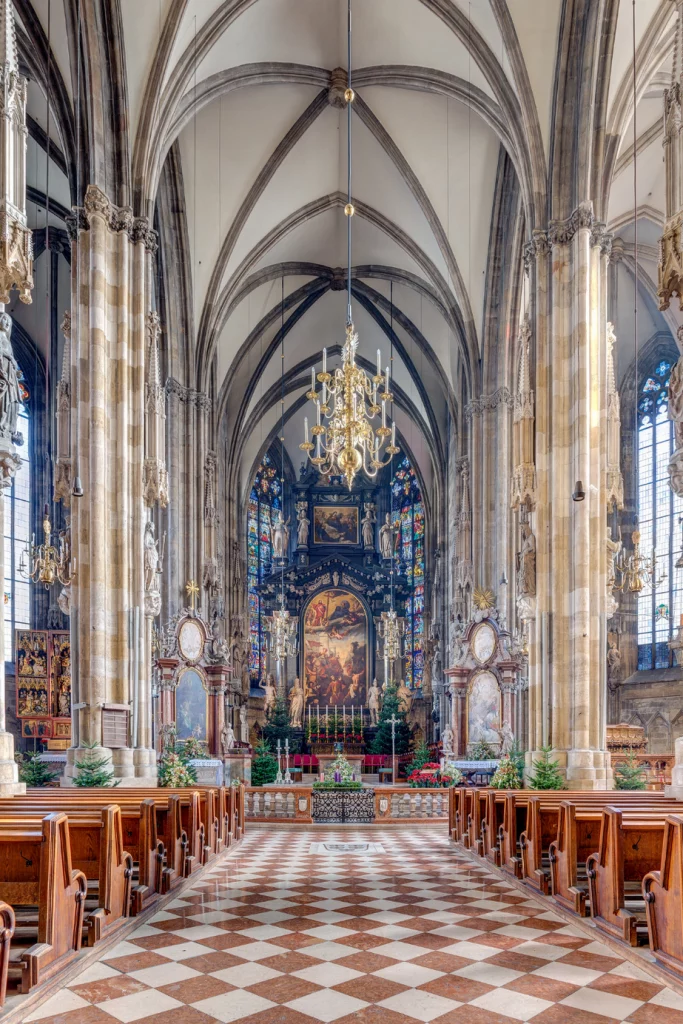
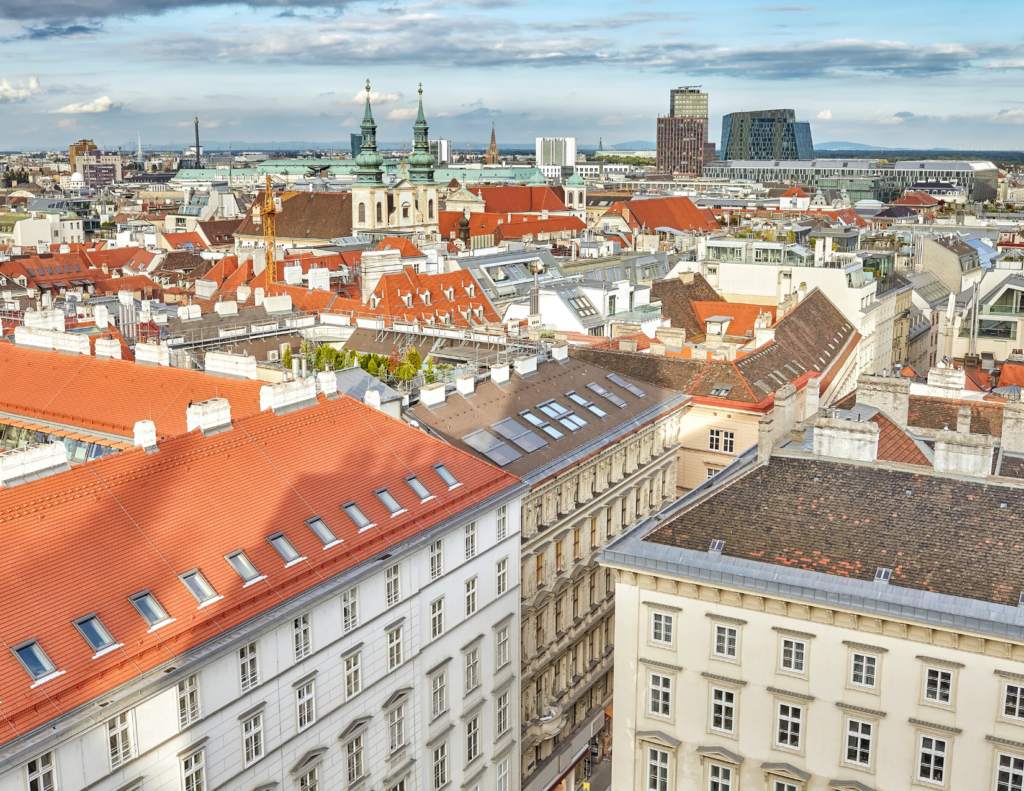
3. Vienna Opera House
Then, sashay down to the Vienna State Opera (a 10 minute walk), which dates from 1869. The Staatsoper is a magnificent and storied building. It’s played host to some of the world’s best singers and conductors.
Go inside the sumptuous place. You can take a 40 minute guided tour several times a day.
Be sure to check the website for times. Click here for a skip the line ticket and guided tour of the opera house.
When we were there, there was a live performance of La Boheme playing on a big LED screen TV outside the opera house in the evening. It was brilliant, truly a highlight of our trip.
If you want to see opera live in person, you’ll need to book way in advance and pay for an exorbitantly priced ticket.
When strolling in Vienna, be sure to try Austria’s classic coffee shops and its most popular desert, the Sacher Torte.
Join the queue outside the Café Sacher on Philharmonikerstrasse for a classic Viennese atmosphere. Or try Cafe Demel, Hawelka, Sperl, or Rüdigerhof cafes — all great options. Just be sure to reserve in advance!
Day 1 PM: Museum Afternoon
In the afternoon, hit one of Vienna’s many museum. You’re absolutely spoiled for choice.
Here are some of my favorites. You can pick the one that best suits you.
1. Albertina Museum
From the opera house, you’re right next to Albertinaplatz. You can check out the Albertina Museum, housed in (naturally) a palace.
The museum’s vaults contain beautiful artworks by Michelangelo, Raphael, Dürer, Picasso, Monet, and the German Expressionists. It will remind you what drawing can really be.
The museum also has a collection of European paintings and sculptures dating from the late 19th to the mid-20th century. It boasts pieces from celebrated artists like Claude Monet, Pierre-Auguste Renoir, Vincent van Gogh, Marc Chagall, and Pablo Picasso.
The Albertina also hosts temporary exhibitions featuring big art names. When I was last there, they featured the drawings of Michelangelo.
Click here to book a ticket to the Albertina.
2. Museum Quarter
Or, you can head to the Museumsquartier in Vienna. Opened in 2001, the Museum Quarter is dubbed Vienna’s “urban living room.”
It’s a cluster of old master and contemporary art collections in a “culture plaza” teeming with shops and cafes. It’s on the site of the old Hapsburg Stables. The Museumsquarter galleries are surrounded by the edgy Street Art Passage for fans of graffiti.
There’s a lot to see here, if you’re a culture vulture. But you’ll have to choose, unless you want to camp out there for the entire 3 days of your visit.
I’m rather partial to the Leopold Museum, with its collection of Art Nouveau and Expressionist masterpieces from Egon Schiele and Gustave Klimt.
>>> Click here to pre-book a skip the line ticket
3. Sigmund Freud Museum
Another Vienna museum that I fancy is the Sigmund Freud Museum. Vienna was home to the godfather of psychoanalysis.
Housed in his former residence, the museum explores Freud’s life and work and the theory of psychoanalysis.
In 2020, the museum reopened after an expansion that doubled the size of its permanent collection. You won’t see Freud’s famous couch. (That’s in his titular museum in London). But there is some original furniture and Freud’s diaries.
>>> Click here to book a skip the line ticket for the Freud Museum
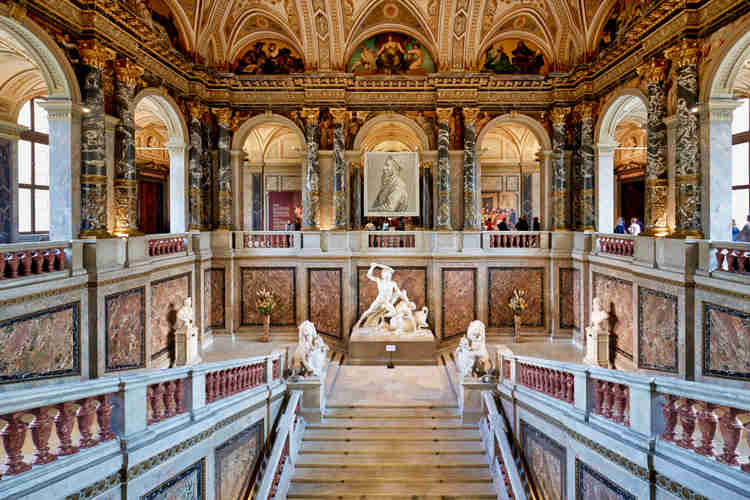
4. Kunsthistorisches Museum: Old Masters
In a sea of riches, the Kunsthistorisches Museum is likely the grandest of Austria’s museums. Opened in 1891, the Kunsthistorisches is Vienna’s Louvre. The museum is one of the world’s most impressive fine art museums.
The Kunsthistorisches is housed in a lavish palace. It consists of works from the venerable Habsburg art collection built by emperors.
The ornate facade, dramatic stairways, marble floors, and impeccable gardens won’t let you forget it either.
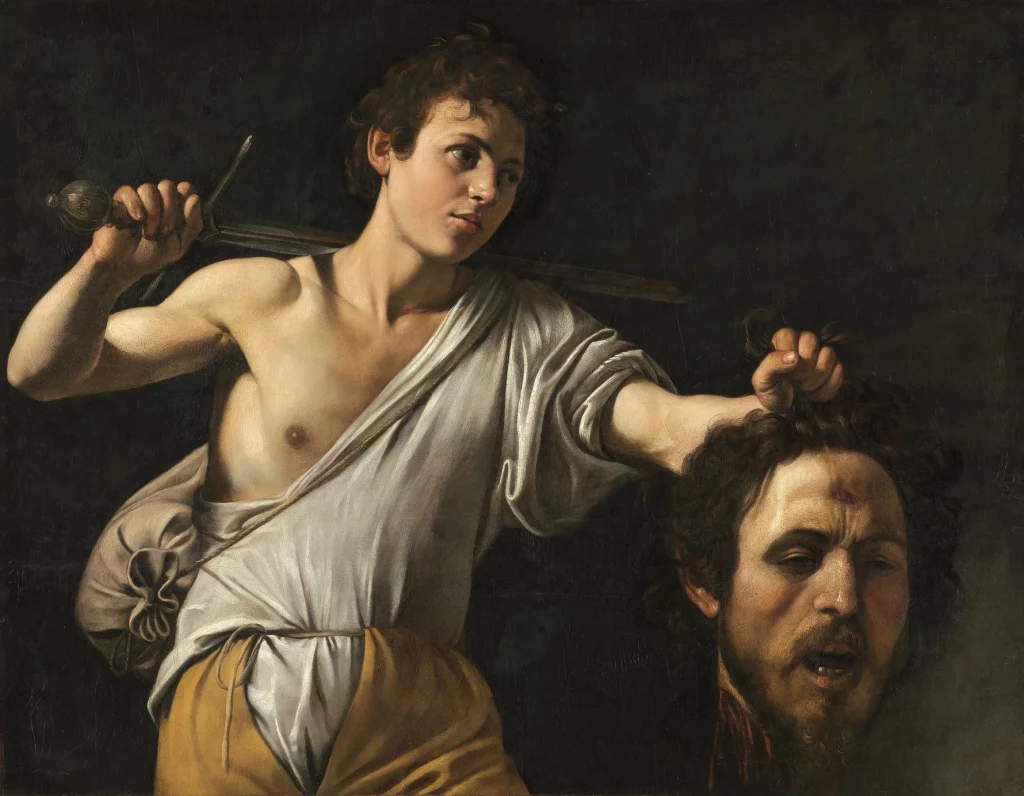
The museum’s Picture Gallery is just splendid. It features an extensive collection of paintings from the Italian Renaissance, Northern Renaissance, and Baroque periods.
There’s an unparalleled trove of art works by Pieter Bruegel the Elder, the chronicler of daily village life. There are also pieces by Vermeer, Durer, Caravaggio, Velazquez, Rembrandt, Raphael, and Titian.
Click here to pre-book a ticket. Click here to book a guided tour of this magnificent museum.
5. Beethoven Museum
If you’re a Beethoven fan (and who isn’t), Vienna is full of Beethoven sites. If you want to see and feel Beethoven’s ghost, head to the Beethoven Museum on the city outskirts. This tiny museum is superb and packed with Beethoven trivia.
The space only re-opened to the public in 2017, after renovation. There are 14 rooms grouped into 6 themes that illustrate Beethoven’s life and work. You can read, see, and listen to his astonishing music.
You can also see a lock of Beethoven’s hair and his death mask. You can even don earphones to see how Beethoven himself experienced deteriorating hearing.
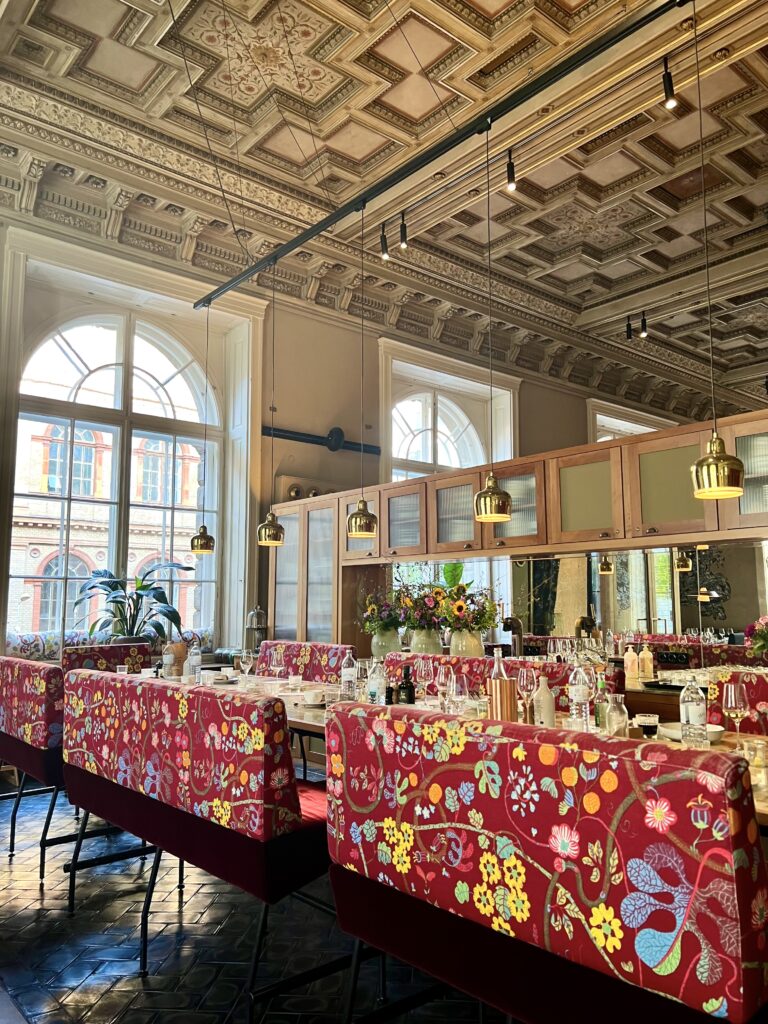
Day 1: Dinner & Drinks
Whew, after that exhausting first day, you’ll be hungry for dinner. I recommend Salonplafond, a trendy restaurant in the MAK Museum on Stubenring.
The restaurant is in a large airy room with imaginative decor, food, music. And it wasn’t too loud. Here’s a good list of other restaurants in the city center for your other nights.
A great place for late night (or pre dinner) cocktails is the rather glamorous Krypt, right near the Sigmund Freud Museum. It’s a hipster bar where architecture and art provide the setting. You’ll be swathed in exposed brick in an underground 18th century building.
Another great spot is The Sign, hidden away in the city center. You can sit down at a table or the bar. If you don’t know what you want, the bartender will oblige you. Expect some unusual ingredients!
You also spend your evening in Vienna taking a nighttime walking tour of Vienna’s most beautiful buildings or a ghost and legends walking tour.
Day 2: Palace Day
AM: Tour Schönbrunn Palace
In the morning on day 2 of your 3 day Vienna itinerary, get started bright and early. Begin by visiting Schönbrunn Palace. It’s Vienna’s #1 attraction, a UNESCO-listed site since 1996, and the height of elegance.
Don’t dally. The lines worsen as the day goes by. Purchase your tickets online in advance. You can also hop on a guided skip the line tour, book a guided tour with a historian, or a dinner and concert evening.
The swishy Renaissance palace was the summer home of the Hapsburg dynasty, the family that ruled the Austro-Hungarian empire for nearly 650 years.
You’ll want to check out the palace itself and the extensive garden complex. Be prepared to walk.
Of Schönbrunn’s 1441 rooms, 40 are open to the public via audio guide or guided tour. The “Imperial Tour” takes you into 22 rooms, including the imperial apartments of Emperor Franz Joseph and famous wife, Empress Sisi.
The “Grand Tour” continues to 18 more rooms and includes the 18th century interiors from the time of Maria Theresa, who conceived of and built Schoenbrunn.
Don’t miss the Mirror Room, where Mozart gave his first concert at age 6.
And the Schönbrunn experience isn’t just limited to the palace. Oh no.
There’s the Apple Strudel Show, the Marionette Show, the Gloriette monument, the Orangery, the Imperial Carriage Museum, and a zoo. You could spend your whole day here, if you were so inclined.
PM: Belvedere Palace
But, since you have only 3 days in Vienna, I say it’s time to move on to the next grand palace, the Belvedere Palace.
The Belvedere Palace is one of Vienna’s most visited tourist spots and another important UNESCO site, for its showy architectural ensemble.
The Belvedere Palace was built in 1712-23 by Johann Lucas von Hildebrandt, a master Baroque architect. It was the swishy summer residence of Prince Eugene of Savoy, a legendary military leader of his time.
The palace has immpecably sculptured grounds and over-the-top interiors.
The Belvedere is also one of Europe’s most important museums. It’s a haven of Baroque and Austrian art from the 19th and 20th centuries.
The vast majority of the museum’s important art is stashed in the sumptuous Upper Belvedere, which sees the most visitors. The lower Belvedere boasts a Hall of Grotesques, the Marble Gallery, and the Golden Room.
The Upper Belvedere’s main claim to fame is the world’s largest collection of the gold-toned Art Nouveau paintings of Gustav Klimt, including the world famous The Kiss. It also boasts masterworks by Egon Schiele and Oskar Kokoschka, two important Expressionist painters.
Like Schoenbrunn, the Belvedere has some lovely gardens to meander in, if you’re suffering from art fatigue or the line to see The Kiss is too long. And the gardens are free.
Click here to pre-purchase a skip the line ticket to the Belvedere palace. Click here to book a 2.5 hour guided tour of the Palace.
At the end of day 2, stroll Vienna by night. The sites look different then, more surreal. You can even book an evening walking tour with food and wine.
If you’re inclined, take a 2 hour nighttime walking tour and hear stories about Vienna. Or, try The Third Man walking tour and visit the filming locations of the international cult film.
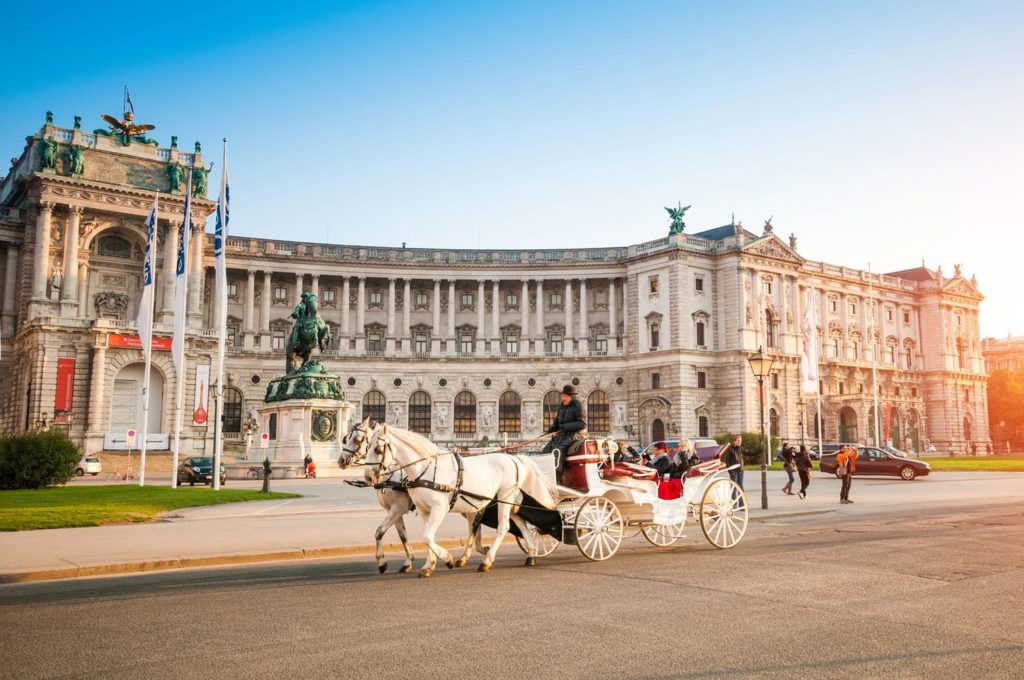
Day 3: Delve Deeper into Vienna
AM: Hofburg Palace
Another palace you say? Why yes. Hofburg Palace is one of the world’s biggest palace complexes consisting of several imperial buildings. The Hapsburgs lived there until 1918.
Honestly, I enjoyed it more than Schönbrunn. Far less tourists and just as much historical intrigue and swirly Rococo glitter.
The palace itself is a lively combination of Rococo and Renaissance architecture.
There are three parts you can visit: the Sisi Museum, the Imperial Apartments, and the Silver Collection. If you want to see everything, it will take several hours.
The Imperial Apartments are a window into the opulent lifestyle of the Habsburg monarchy. Thee meticulously preserved rooms show the lavishness of the royal living quarters, including the Emperor Franz Joseph’s walnut room and Empress Sisi’s silver salon.
Opened in 2004, the Sisi Museum is a chic cult-like museum dedicated to the fanatic fans of Empress Elizabeth, the wife of Emperor Franz Joseph.
The museum shines a light on the “misunderstood” princess, whose life resembles that of Princess Diana, or so you’re told.
Unless you’re an avid jeweler or niche interior decorator, the Silver Collection is a bit of a yawn and skippable.
Click here to book a skip the line guided tour of Hofburg Palace and the Sisi Museum. Click here to book a performance of the Lippizaner horses at the palace’s Spanish Riding School.
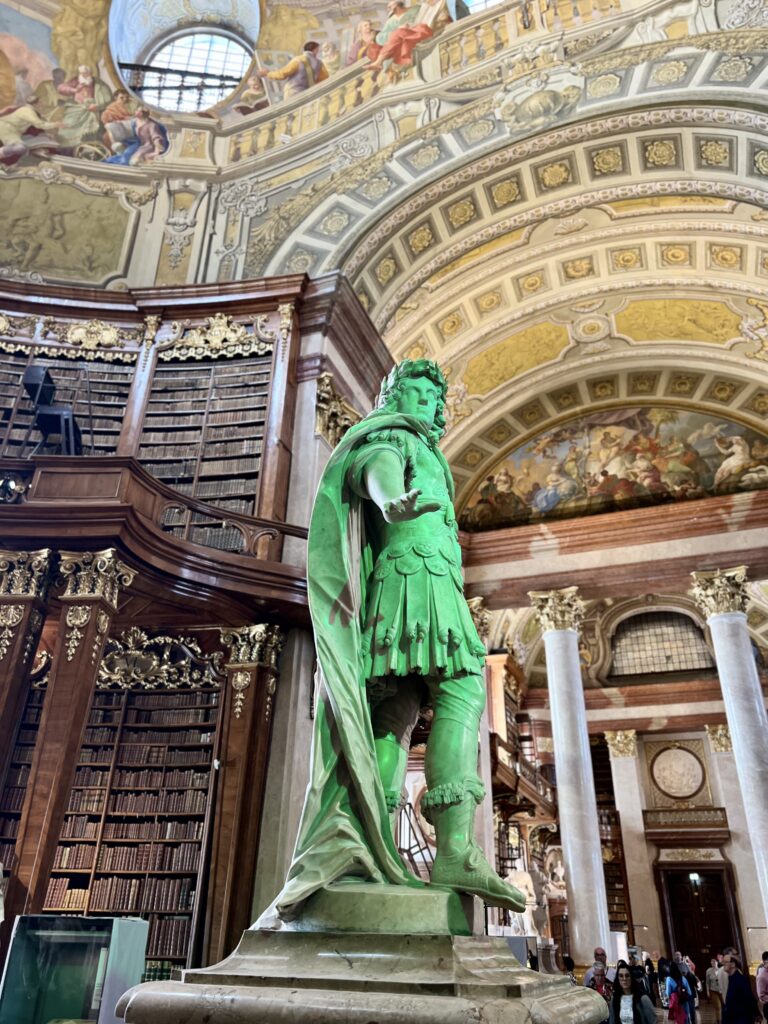
Austrian National Library
Heroes’ Square, Heldenplatz, sits in front of Hofburg. There, you’ll find the stunning 17th century Austrian National Library.
Don’t just stroll by. You’ll regret not going in, especially if you’re a book lover.
The Baroque library has a dreamy time warp feel, almost like a movie set. Here’s the website with info on how to visit.
Built by Emperor Charles VI, it boasts a soaring frescoed ceiling, 200,000 books dating from 1500, and antique globes.
If you’ve seen enough imperial apartments, this is good alternative venue to the apartments in the Hofburg Palace.
Day 3 PM: Round Up Of Vienna’s Key Sites
1. St. Charles Church
After the palace and library, grab some lunch in the city center at a cozy cafe.
Then you’re off to admire St. Michael’s Church in the Michaelsplatz. Then make the short walk to St. Charles Church, or Karlskirche, on Karlsplatz.
The striking Baroque church, with swirling freestanding columns, dates from 1737. There’s a panoramic view from its rooftop.
The church has concerts on a regular basis. So if you’re in the mood for music, click here to book a Vivaldi concert ticket or here to book a Mozart concert.
Close to the church is the Naschmarkt, Vienna’s vibrant and mile long market. You’ll find both traditional Viennese food and exotic food stuffs.
The market is lined with dozens of sit down eateries and coffee shops as well.
If you’re a foodie, consider going a food tour of the market. Or go on a longer sweet and savory food tour.
2. Vienna City Hall
Then head to the 19th century City Hall (Rathaus). Designed by Friedrich von Schmidt, the Neo-Gothic City Hall is both monumental and stunning.
You’ll be struck by the grandeur of the sweeping staircases and the spacious, ornate halls. The main ceremonial staircase, adorned with statues and intricate stonework, leads to the various floors of the building.
There are various rooms and halls to visit. Along the way, you’ll find a rich array of decorations – from statues and busts of important figures to frescoes and intricate carvings.
You can only visit via a guided tour on Monday, Wednesday, and Friday at 1:00 pm.
3. Burgtheater
Also nearby is the Burgtheater, fondly nicknamed the “Burg,” which means castle. There are daily tours at this German language theater at 3:00 pm.
For Klimt fans, this may be an unmissable site. Waltz up the grand staircase, and admire Klimt’s ceiling paintings from his early career.
There are four ceiling frescos created between 1886-88 for the grand staircase. They’re next to works by Klimt’s brother, Ernst Klimt, and artist Franz Matsch.
Although earlier and more traditional Klimt paintings, they still presage his Secessionist phase.
Day 3 Evening: Concert at Schonbrunn’s Orangery
On your final evening, consider going to a concert at the Orangery at Schönbrunn. I went.
Although it was a little touristy, the music and singing was quite sublime. Click here to book a concert.
Or, as I mentioned above, book a concert at St. Charles Church or the Staatsoper (the latter needs to be booked months in advance!)
Day 3 PM Alternative: Half Day Trip to Bratislava
But perhaps you’ve had your fill of princesses, plates, and Klimt? If so, as an alternative to these last few sites, you could opt for a half day trip to Bratislava, the tiny capital of Slovakia.
Bratislava is a little over an hour from Vienna. Vintage-y Bratislava is filled with pastel colored houses, quirky sculptures, and the world’s most adorable pastry shop, Konditorei Kormut.
Bratislava also features a unique, almost over the top, blue church, the Church of St. Elisabeth, 10 minutes from the city center.
Everything about the Art Nouveau church is blue — the interior (also with punches of yellow), the exterior, and even the tiles on the roof. Pretty isn’t usually a word I use to describe churches, but it’s apt here.
Even better, Bratislava is crowned with a historic castle, which is really the iconic spot in the town. Perched on a small hill and about a 15 minute hike, the castle is the best viewpoint of the old town.
Outside, it’s an elegant vision, with Gothic and Renaissance elements. Inside, there’s a museum of history.
Click here to book a full day guided day trip tour from Vienna to Bratislava. Or book your own 2 hour guided walking tour for when you arrive.
Though they are further afield than Bratislava, you can also book a guided day trip to Salzburg or a guided day tour to Hallstatt.
Tips For Spending 3 Days In Vienna
1. How To Get To Vienna
You’ll likely fly into Vienna International Airport (VIE). You can get to the city by train, bus, or taxi.
You can also book a private transfer to your hotel. You can reach the downtown in about 25 minutes, more if there is traffic.
If you arrive in Vienna by train, you’ll be at Hauptbahnhof Station, the main train station in the city. From there, the metro or a taxi will have you downtown in 5 minutes.
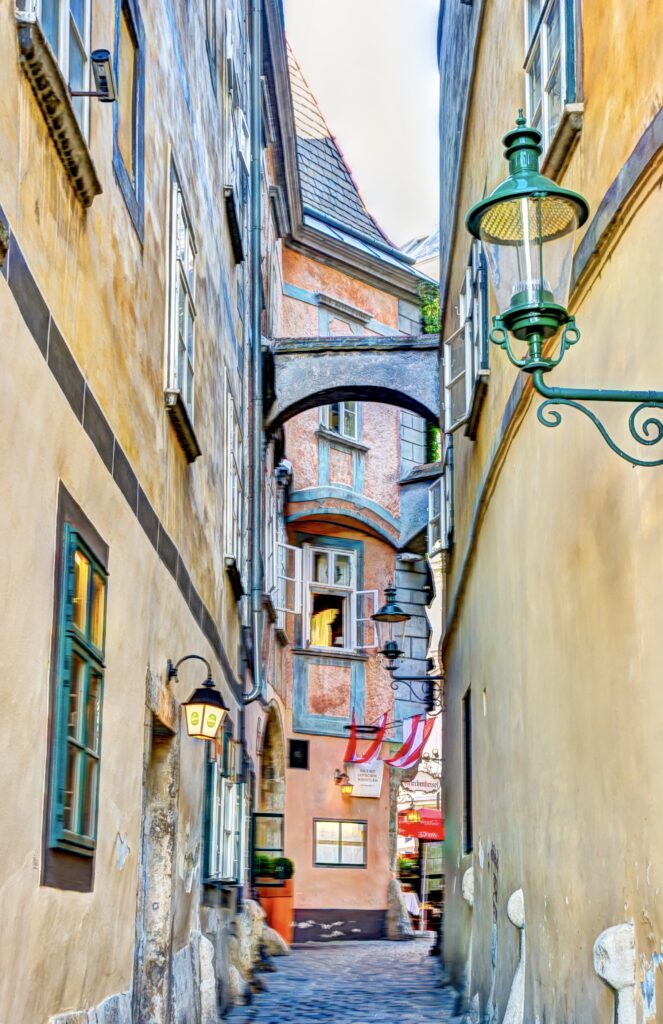
2. How To Get Around Vienna
Vienna is a very compact and walkable city. The center is flat and many of the attractions are within the Ring Road that encircles the city. Many areas are pedestrianized.
But not all of the sites can be reached on foot. Fortunately, Vienna has a great public transportation system that’s easy to use.
There are trams and cabs are fairly plentiful. You can’t hail one on the street very easily. But they congregate around popular sites like the Staatsoper, Hofburg Palace, or the museums.
There are plenty of other fun ways to get around Vienna too. You can take a guided Segway tour, a bike tour, book a ticket for the hop on hop off bus, or (super cool option), take an e-scooter tour.
3. Vienna Passes
Vienna isn’t an inexpensive destination. And the main cost won’t be just food and lodging.
It’s the attractions that add up quickly. You may want to invest in either the Vienna Pass or the Vienna Card.
The Vienna Pass is more expensive than the Vienna Card. For three days, it’s $150.
However, the Vienna Pass gives you complete access to Vienna’s top attractions (except the opera) and you can generally skip the queue.
4. Carry Some Cash
You need cash in Vienna. Some restaurants and cafes don’t take credit cards. And you have to pay a euro or two to use restrooms and check your bags at museums.
5. Vienna Tourist Traps
There are some sites in Vienna that you’ve no doubt heard of, but are skippable tourist traps.
Unless you have way more than 3 days in Vienna, you should forget about:
- (1) Prater (an amusement park with loud crowds);
- (2) the Figlmüller (you can get schnitzel anywhere);
- (3) the tourist tram on the Ringstrasse (just walk);
- (4) the horse carriages that tote lazy tourists around (horribly overpriced);
- (5) the Spanish Riding School (expensive and really not worth the time and effort).
6. Cafes In Vienna
Vienna is serious about its cafe culture. They’re opulently decorated formal spaces.
You can sink onto a damask couch and linger over coffee and a pastry, which will be served on a silver tray by a starchy uniformed waiter. It’s a uniquely Viennese experience.
You may want to book a walking tour of Vienna’s most famous coffee houses.
Cafe Central is one of Vienna’s most famous coffee shops, once frequented by Freud and Trotsky. Demel is is the ultimate Viennese chocolate shop a cafe, where choco-dreams come true.
Across from the Vienna Opera House, you can splurge on Vienna’s most iconic dessert, the Sacher Torte, at the historic Cafe Sacher.
The torte consists of two layers of dense chocolate sponge cake filled with a slice of apricot, which is then covered with chocolate ganache and a dollop of whip cream.
Those who want to indulge can book a pastry tour of Vienna, a coffee and strudel tour, or a cafe and market tour. I recently did the pastry tour and it was awesome!
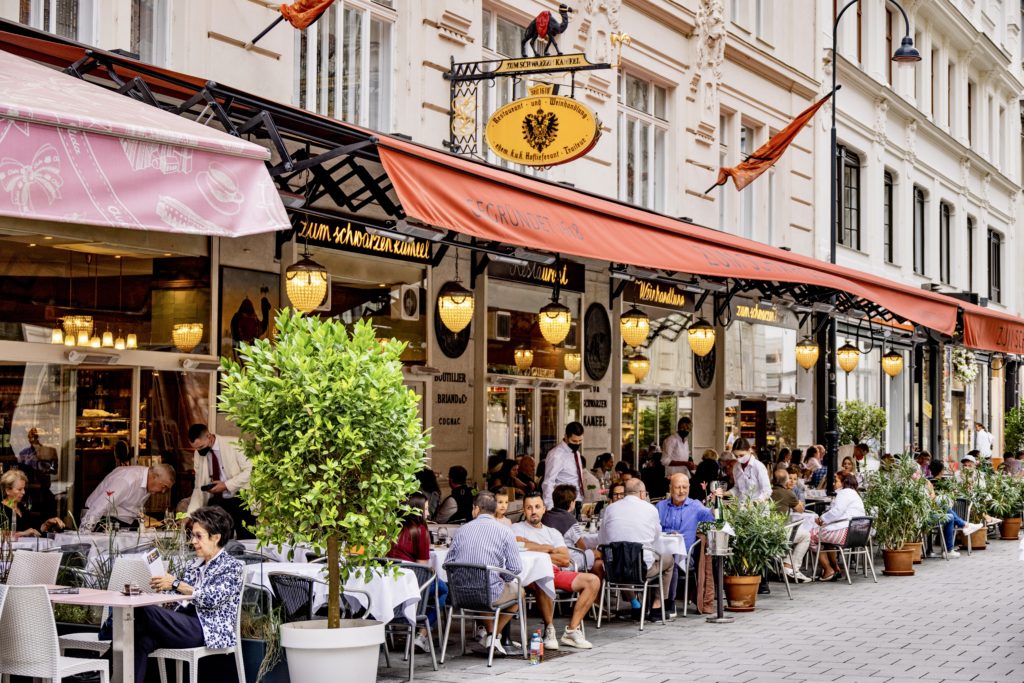
7. Where To Stay In Vienna
Vienna is loaded with both grand hotels and adorable boutique hotels in centuries old neighborhoods.
One of my favorite hotels is the Palais Coburg. It’s a beautiful hotel in a 19th century palace.
The lovely Hotel Sans Souci Wien is an elegant properly near Museum Quarter with a spa. The Grand Ferdinand Hotel is centrally located and has a unique rooftop pool and restaurant.
Of course, you can always check out classics like Ritz-Carlton, Park Hyatt, and the elegant Hotel Sacher Wien.
You should also check out these lovely boutique hotels: House of Time or Palais Hansen Kempinski.
I hope you’ve enjoyed my 3 days in Vienna itinerary. You may enjoy these other Austria travel guides:
- Guide To the Best Museums in Vienna
- Guide To the Wachau Valley
- Guide To the Danube River
- Beethoven Guide To Vienna
- Klimt Guide To Vienna
- Guide To the Sisi Museum
- Guide To Melk Abbey
- Guide To the Belvedere Palace
- Things To Do in Vienna in Winter
If you’d like to spend three days in Vienna, pin it for later.

